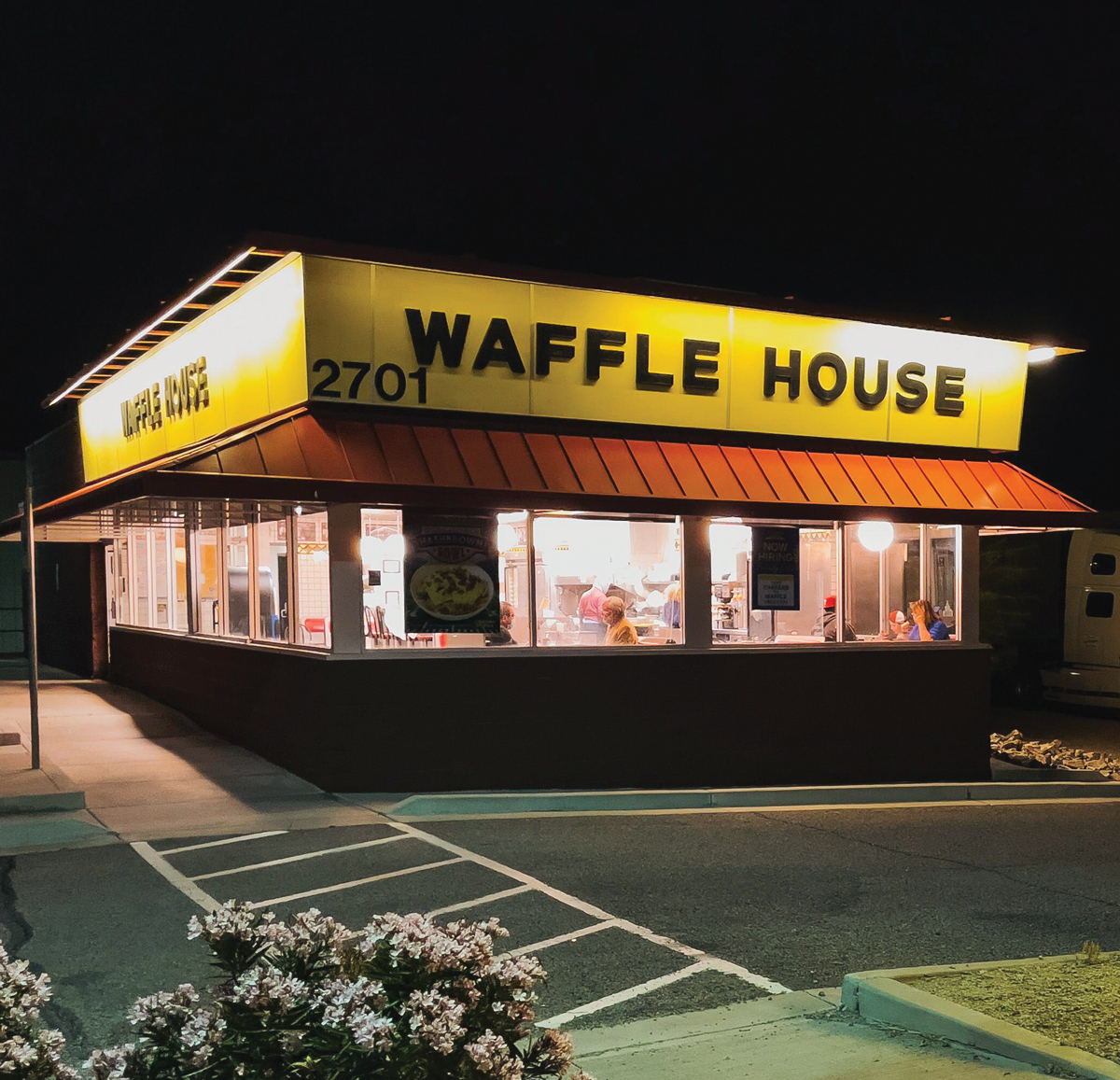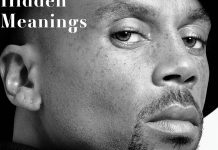
Hugh Mitton / Alamy Stock Photo
“Waffle House is much like the South itself,” says Ty Matejowsky—a straightforward enough observation, on its face. Everybody knows Waffle House is a Southern icon. But why?
One of the central insights of Matejowsky’s new book, Smothered and Covered: Waffle House and the Southern Imaginary, is that whatever Southern-ness we find at Waffle House has as much to do with what we want to find there as with whatever the chain is serving. Waffle House is not Cracker Barrel, leaning into regional kitsch and nostalgic cliche; its own mottos and catchphrases (“America’s best place to eat”) are resolutely bland. Its advertising asserts little sense of a Southern identity, allowing the restaurant to be a “blank canvas” for other people’s projections, Matejowsky told me: “Some people see the South as a backwoods, hostile place; other people think it’s the greatest thing ever. You have similar dichotomies in the way Waffle House is viewed.”
Launched in 1955 in Avondale Estates and headquartered today in Norcross, Waffle House has grown to nearly 2,000 locations, one-quarter of them in Georgia (which has a Waffle House for every 24,000 residents). Surprisingly, given the explosion of interest in Southern foodways over the past few decades, the chain has not until now been subject to the full-length academic-monograph treatment. In Smothered and Covered, Matejowsky—a cultural anthropologist at the University of Central Florida—explores the niche Waffle House occupies in American culture. The “imaginary” of the book’s title is a term borrowed from anthropology, he said, reflecting “idealized or very evocative expressions of a place or a people. It’s not necessarily reflective of reality—it tends to be very aspirational, like how we want it to be.”
How do we want Waffle House to be? Anthony Bourdain described it as “an
irony-free zone where everything is beautiful and nothing hurts; where everybody regardless of race, creed, color or degree of inebriation is welcome.” That reputation, particularly the last part, may be a little self-fulfilling: A meticulous researcher, Matejowsky compiled nearly five full pages of description, culled from news accounts, of various late-night, often drunken misadventures. The flip side to this isn’t just the heartwarming stories that also emanate from Waffle House, also fulsomely collected here. It’s the fact that, in the middle of the night, Waffle House is one of the few places open with a barrier to entry that’s almost nil—as long as you can buy a cup of coffee, you can take a seat, making it “an eating environment where the line between private and public space significantly blurs,” as Matejowsky writes. There’s a democracy to that kind of environment, and democracy—as the graveyard shift at Waffle House often flamboyantly demonstrates—can get messy.
Speaking of democracy: The chain’s second location was at Peachtree and 10th Street, where Black college students staged a sit-in in the 1960s to protest segregation. One of Waffle House’s founders, the late Joe Rogers Sr., tells a somewhat slippery tale about that sequence of events, as Matejowksy recounts in a fascinating chapter on Waffle House and race. In a 2000 memoir, Rogers claimed that the restaurant was never formally segregated (Black people simply chose not to eat there) and that integration was accomplished with little drama—a somewhat paternalistic, characteristically Atlantan recounting. The truth is more nuanced, Matejowsky argues, but the story exemplifies the fine line Waffle House has trod between the competing desires of its diverse customer base—in recent years, for instance, maintaining a reputation as a place for all while being “effectively absent,” relative to other major brands, in conversations around the Black Lives Matter movement.
Here, too, whatever actions the company does or doesn’t take seem to matter less than whatever everybody else thinks about it. Cellphone video from May 2020, Matejowsky writes, when people flooded downtown Atlanta in the wake of the police murder of George Floyd—leaving the occasional mess in their wake—“shows groups of roaming protesters chanting, ‘Not the Waffle House! Not the Waffle House!’” Now, that’s brand loyalty.
This article appears in our December 2022 issue.













